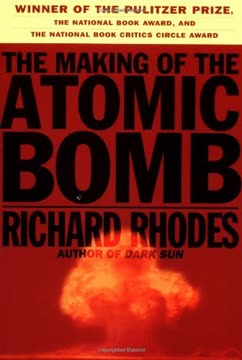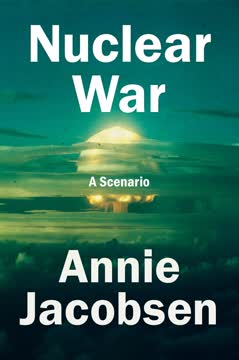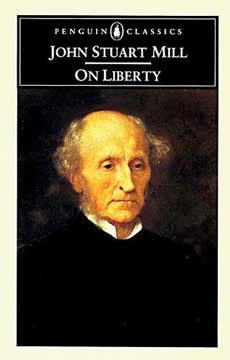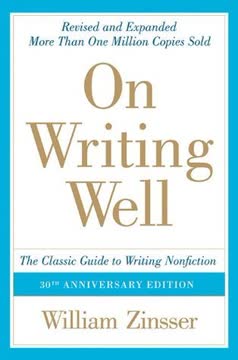Key Takeaways
1. Writing is a learnable skill, not a mystical talent
Writing is no more difficult a skill than any other, such as engineering. Like every human activity, it requires practice and knowledge. But there is nothing mystical to it.
Demystifying writing. The art of writing, often shrouded in mystery, is actually a learnable skill. Like any other profession, it requires dedication, practice, and knowledge. The key is to approach writing as a rational pursuit, governed by identifiable principles, rather than an inexplicable talent bestowed upon a select few.
Practical approach to improvement:
- Study and understand the principles of good writing
- Practice regularly, applying learned techniques
- Analyze successful writers' works to understand their methods
- Seek feedback and be open to constructive criticism
- Develop a systematic approach to writing, treating it as a craft to be honed
By viewing writing as a skill to be developed rather than an innate gift, aspiring writers can approach their craft with confidence and a growth mindset, leading to continuous improvement and eventual mastery.
2. Clarity and objectivity are paramount in nonfiction writing
Clarity applies to any level—to the broadest statement or to the minutest details. Whatever you say, it has to be clear.
Focus on clear communication. In nonfiction writing, the primary goal is to convey information and ideas effectively. This requires a commitment to clarity and objectivity throughout the writing process. Clear writing ensures that the reader can easily grasp the intended message without confusion or misinterpretation.
Strategies for achieving clarity:
- Use simple, precise language
- Avoid jargon or overly complex terminology
- Structure ideas logically and coherently
- Provide concrete examples to illustrate abstract concepts
- Use analogies to explain complex ideas
- Anticipate and address potential misunderstandings
Objectivity in nonfiction writing involves presenting information without personal bias or unsubstantiated opinions. This doesn't mean avoiding having a perspective, but rather ensuring that any claims or arguments are well-supported by evidence and logical reasoning. By prioritizing clarity and objectivity, writers can create nonfiction works that effectively inform and engage their readers.
3. Effective outlining is crucial for organizing thoughts and content
No beginner should write without an outline. If I could enforce this as an absolute, I would. Most writing problems—the psychological barriers, setbacks, discouragements—come from the absence of a proper outline.
The power of planning. An outline serves as a roadmap for your writing, providing structure and direction. It helps organize thoughts, ensures logical flow, and prevents writer's block. A well-crafted outline allows writers to see the big picture while also guiding the development of individual sections.
Key elements of effective outlining:
- Start with a clear subject and theme
- Identify main points and supporting details
- Arrange ideas in a logical sequence
- Include potential examples or evidence
- Allow for flexibility as you write
The outline should be detailed enough to guide your writing but not so rigid that it stifles creativity. As you write, you may discover new connections or ideas that require adjustments to your original plan. The outline serves as a foundation, but the writing process itself often reveals insights that can enhance your work.
4. Subconscious processes play a vital role in writing
When it comes to actually writing the draft, however, your subconscious must be in the driver's seat. Your conscious mind ensures that you are in focus, know what you are writing about, and are driving in the right direction. But for the execution of your purpose, you rely on your subconscious.
Harnessing the subconscious. The writing process involves a delicate balance between conscious planning and subconscious creativity. While the conscious mind sets the direction and maintains focus, the subconscious often provides the most creative and insightful content. Trusting your subconscious during the drafting process can lead to more natural and engaging writing.
Techniques for engaging the subconscious:
- Create a distraction-free writing environment
- Write without self-censorship during the first draft
- Allow for periods of incubation between writing sessions
- Practice freewriting to tap into subconscious thoughts
- Pay attention to sudden inspirations or ideas
Understanding and leveraging the role of the subconscious can help writers overcome blocks, generate fresh ideas, and produce more authentic and compelling work. However, it's important to remember that the conscious mind still plays a crucial role in guiding the overall direction and ensuring coherence in the final product.
5. Editing requires a different mindset than writing
There are three major differences between writing and editing. First, in writing you rely on your subconscious with minimum interference from your conscious mind. In editing, you do the opposite: the dominant process involves your conscious mind.
The editing shift. Editing is a distinct phase of the writing process that requires a different approach and mindset compared to the initial drafting. While writing often benefits from a free-flowing, subconscious-driven process, editing demands a more critical, analytical approach.
Key aspects of effective editing:
- Maintain objectivity by distancing yourself from the text
- Focus on structure, clarity, and coherence
- Eliminate redundancies and tighten prose
- Ensure consistency in tone and style
- Verify facts and strengthen arguments
- Refine language for precision and impact
Effective editing often requires multiple passes, each focusing on different aspects of the work. It's helpful to approach the text as if you were a reader encountering it for the first time, looking for areas that may be confusing, inconsistent, or ineffective. The goal is to refine and polish the raw material produced during the writing phase, transforming it into a clear, coherent, and impactful piece of writing.
6. Style should emerge naturally, not be forced
Style cannot be done to order. This is an absolute. If, when beginning a sentence, you ask whether it is colorful, you will not finish it. Or you will produce one artificial sentence after two hours of work. Style is the result of subconscious integration.
Authentic expression. Style in writing is not something that can be consciously manufactured or forced. Instead, it emerges naturally as a result of the writer's unique voice, experiences, and ways of thinking. Attempting to impose a particular style often leads to artificial and ineffective writing.
Cultivating natural style:
- Focus on clear communication of ideas
- Read widely to expose yourself to various styles
- Practice writing regularly to develop your voice
- Pay attention to rhythm and flow in your writing
- Allow your personality and perspective to shine through
- Refine your style through feedback and revision
While it's beneficial to study and appreciate different writing styles, the goal should be to internalize these influences rather than directly imitate them. Over time, with practice and exposure to various forms of writing, a writer's unique style will naturally evolve. This organic approach results in writing that feels authentic and engaging to readers, rather than forced or artificial.
7. Book writing demands a broader perspective and integration
Every aspect of a work has to be integrated into the total, whether paragraphs into a chapter or chapters into a book. The book should be one unified whole when you finish.
Holistic approach to book writing. Writing a book requires a broader perspective and a higher level of integration compared to shorter forms of writing. Each part of the book, from individual paragraphs to chapters, must contribute to the overall narrative or argument while maintaining a sense of cohesion and purpose.
Strategies for maintaining integration:
- Develop a comprehensive outline before writing
- Regularly review and revise the book's structure
- Ensure each chapter serves a specific purpose in the overall work
- Create clear transitions between chapters and sections
- Maintain consistent themes and ideas throughout the book
- Periodically step back to assess the book as a whole
Book writing is an iterative process that often involves multiple rounds of writing, reviewing, and revising. It's important to maintain flexibility, as insights gained during the writing process may necessitate adjustments to the original plan. The goal is to create a work where each part enhances the others, resulting in a cohesive and impactful whole that effectively communicates the author's ideas or story.
8. Titles should be appropriate, clear, and potentially intriguing
When you select a title, ninety percent of your consideration should be appropriateness, five percent clarity (and if it is appropriate it will be clear), and if possible, the other five percent should be drama or intrigue.
The art of titling. A well-chosen title is crucial for attracting readers and setting appropriate expectations for your work. It should accurately reflect the content and tone of the writing while also piquing the reader's interest. The process of selecting a title often involves balancing multiple factors to find the perfect fit.
Considerations for effective titles:
- Relevance to the main theme or subject of the work
- Clarity and ease of understanding
- Potential to intrigue or provoke curiosity
- Memorability and distinctiveness
- Appropriateness for the target audience
- Avoidance of misleading or overly sensational language
While the title should primarily focus on appropriateness and clarity, adding an element of intrigue can make it more compelling. This might involve using a metaphor, posing a question, or creating a subtle contradiction. However, it's important not to sacrifice clarity or appropriateness for the sake of being clever or attention-grabbing. The best titles often emerge organically from the work itself, capturing its essence in a concise and engaging way.
Last updated:
FAQ
What's The Art of Nonfiction about?
- Comprehensive Guide: The Art of Nonfiction by Ayn Rand is a detailed guide that explores the principles and techniques of nonfiction writing.
- Rational Principles: Rand emphasizes that writing is a skill governed by rational principles, not a mystical talent.
- Structured Approach: The book covers choosing a subject, outlining, drafting, and editing to help writers communicate effectively.
- Philosophical Underpinnings: It integrates Rand's philosophy of Objectivism, enhancing critical thinking and expression.
Why should I read The Art of Nonfiction?
- Improve Writing Skills: Offers practical advice for both novice and experienced writers to enhance their craft.
- Philosophical Insights: Provides a philosophical foundation that aids in critical thinking and coherent expression.
- Overcome Writing Challenges: Addresses psychological barriers like self-doubt and fear of failure, promoting a confident writing practice.
What are the key takeaways of The Art of Nonfiction?
- Writing is a Skill: Writing can be learned and is not solely dependent on inspiration.
- Importance of Outlining: Creating an outline is crucial for organizing thoughts and structuring the article.
- Trust Your Subconscious: During drafting, trust your subconscious to produce ideas without overthinking.
What specific methods does Ayn Rand recommend for writing?
- Creating an Outline: A detailed outline helps organize thoughts and ensures a logical flow of ideas.
- Trusting the Subconscious: Let the subconscious lead during drafting, allowing words to come automatically.
- Editing in Layers: Edit in stages, focusing on structure, clarity, and style for thorough and effective revisions.
How does Ayn Rand define the role of the audience in writing?
- Understanding Your Audience: Identify the type of audience you are addressing to tailor the writing accordingly.
- Contextual Knowledge: Consider the audience's knowledge level to determine necessary explanations.
- Avoiding Assumptions: Assume nothing is self-evident but logic to ensure clarity in communication.
What are some common writing problems discussed in The Art of Nonfiction?
- The Squirms: A state of mental paralysis due to subconscious contradictions or lack of clarity.
- Over-Staring: Focusing too much on a sentence or paragraph, leading to a loss of context.
- Pet Sentences: Clinging to favorite sentences that don't fit the work, hindering logical progression.
What is Ayn Rand's view on editing?
- Separate Process: Editing should be approached differently than writing, with objectivity and impersonality.
- Focus on Structure First: Ensure the logical flow of ideas before addressing style or grammar.
- Multiple Readings: Read the article multiple times, focusing on different aspects each time.
How does Rand suggest overcoming writer's block?
- Trust Your Subconscious: Let your subconscious guide you during drafting.
- Mulling Over Ideas: Clarify thoughts by mulling over the subject before writing.
- Avoid Premature Editing: Focus on getting thoughts down first, without editing while writing.
What does Ayn Rand mean by "over-improving" in writing?
- Editing Fatigue: Excessive editing can lead to fatigue and confusion.
- Loss of Objectivity: Obsessing over details can obscure the overall message and structure.
- Importance of Breaks: Taking breaks helps regain perspective and enhances effective editing.
How does Rand define clarity in writing?
- Clear Expression of Ideas: Prioritize straightforward and understandable expression of ideas.
- Avoiding Floating Abstractions: Ground ideas in specific examples and clear definitions.
- Precision in Language: Ensure every word serves a purpose to avoid ambiguity.
What is the significance of style in nonfiction writing?
- Distinctive Mode of Execution: Style reflects the writer's individuality and should emerge naturally.
- Colorful Writing: Enhance the reader's experience with vivid descriptions, without sacrificing clarity.
- Subconscious Integration: Allow style to develop from the subconscious integration of ideas and values.
What are the best quotes from The Art of Nonfiction and what do they mean?
- "Writing is no more difficult a skill than any other, such as engineering.": Writing can be mastered through practice and understanding.
- "Clarity, clarity, and clarity.": Clarity is the most crucial element for effective communication.
- "You cannot do everything at once.": Focus on one aspect of writing or editing at a time to reduce overwhelm and improve quality.
Review Summary
The Art of Nonfiction receives mostly positive reviews, praised for its practical advice on writing and clarity of instruction. Readers appreciate Rand's systematic approach to outlining, editing, and overcoming writer's block. Some find her style rigid and repetitive, while others value her philosophical insights. The book is recommended for both fiction and nonfiction writers, though some struggle with Rand's political views seeping into the content. Overall, it's considered a valuable resource for improving writing skills and understanding the craft.
Similar Books










Download PDF
Download EPUB
.epub digital book format is ideal for reading ebooks on phones, tablets, and e-readers.











